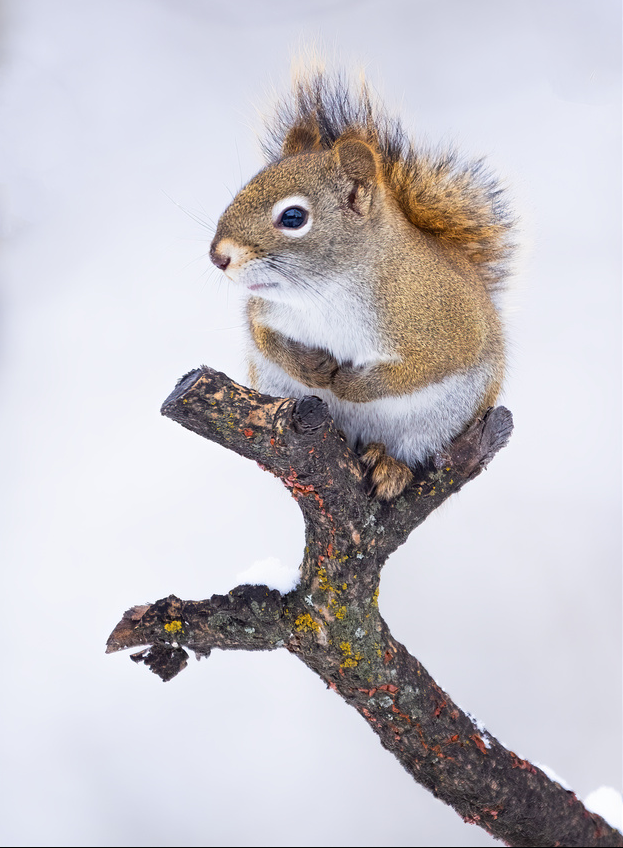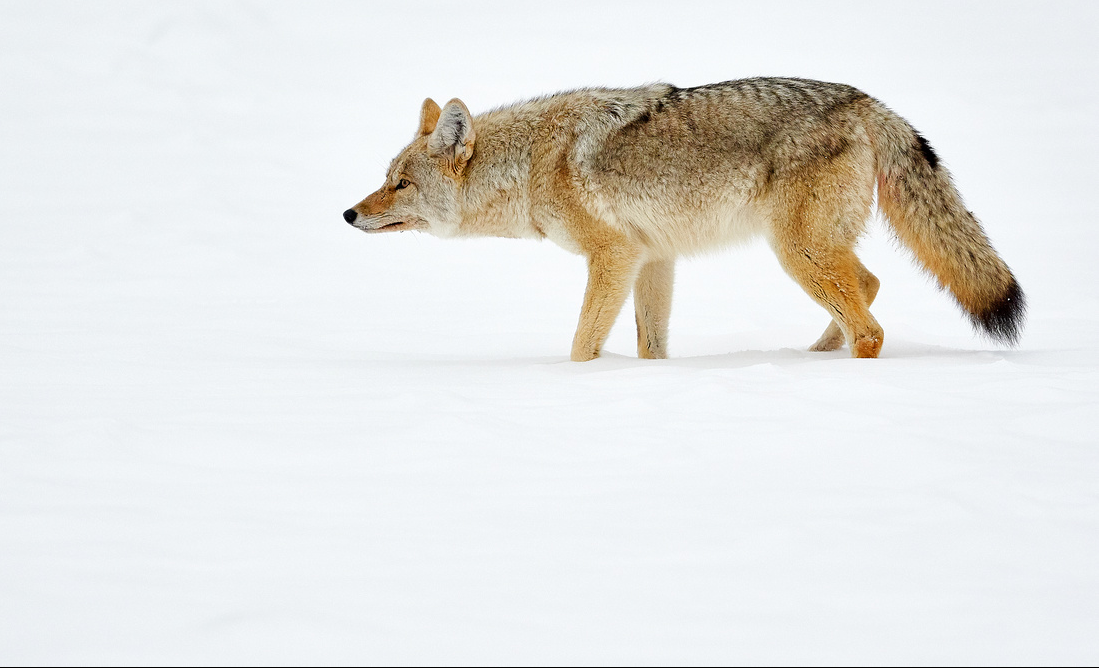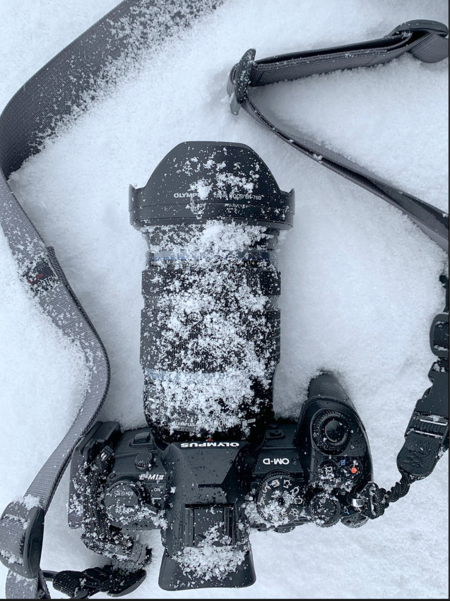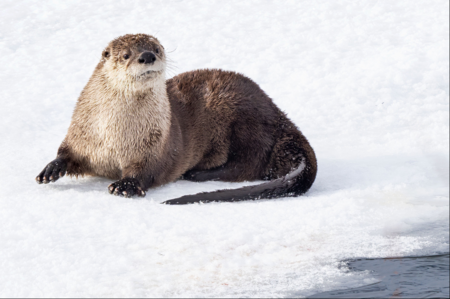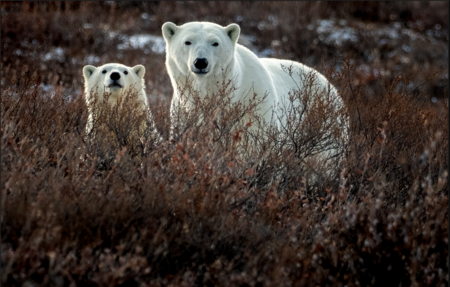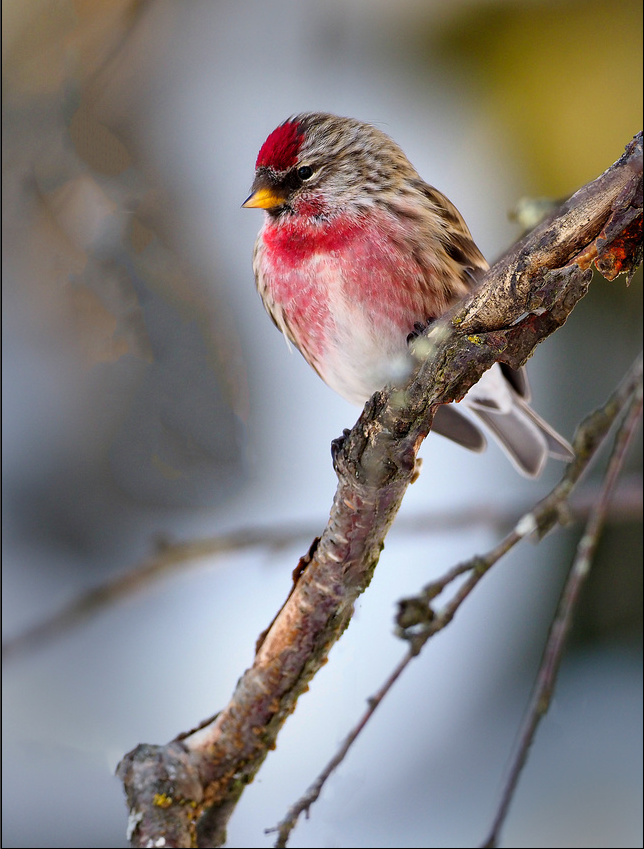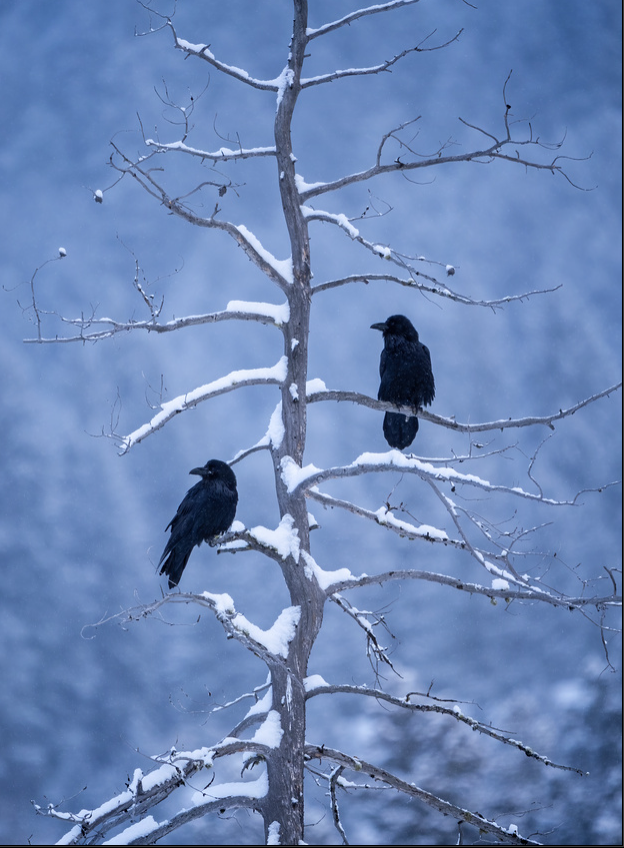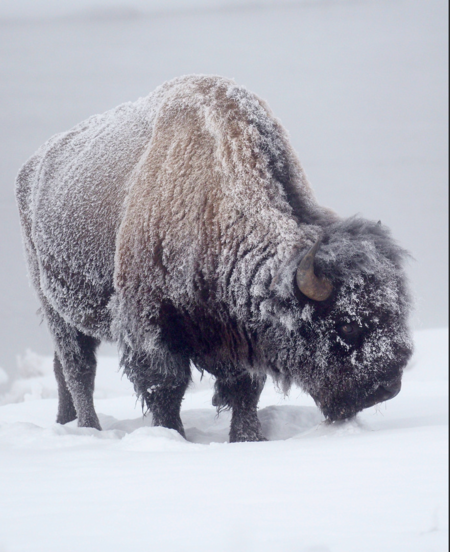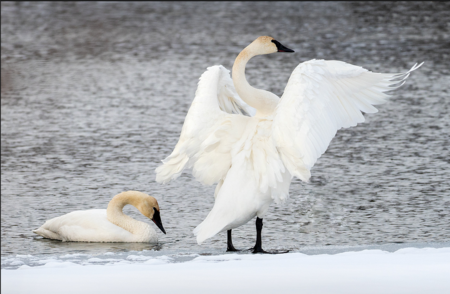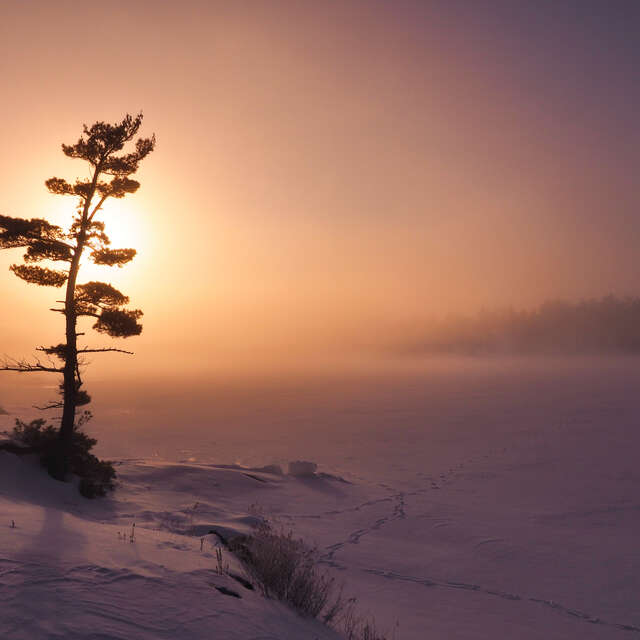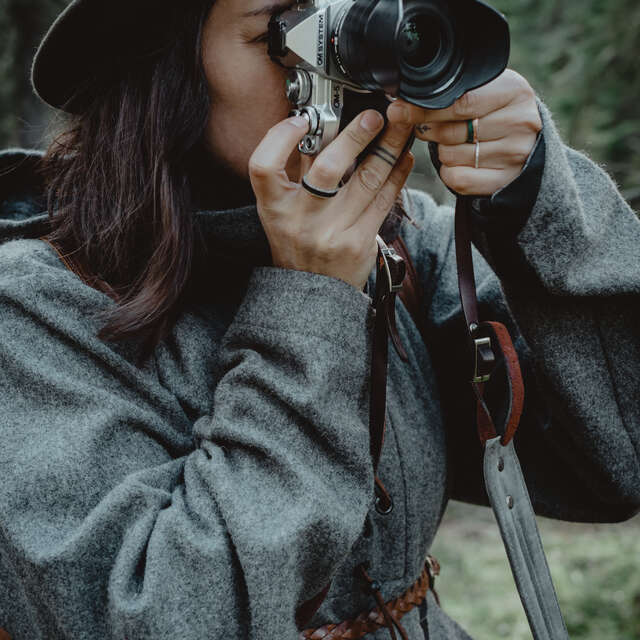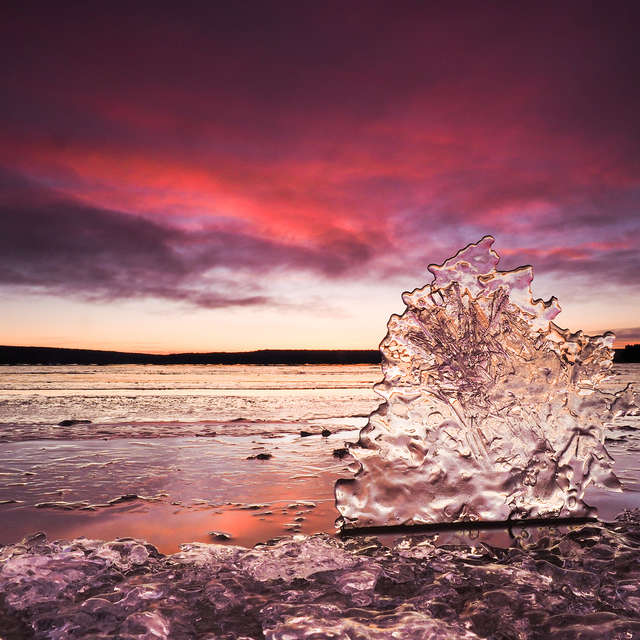As the season changes, the colorful leaves of deciduous forests across the north descend to the ground and the vibrant frosty days of autumn are replaced by the brittle cold of winter. It is easy to kickback and enjoy the warmth of the indoors and think about warm weather photography. And yet, I find myself welling with excitement to get out and explore the newness of winter and the changes that it brings. Especially in the higher latitudes of the Northern hemisphere, winter often delivers a new canvass to familiar scenes and provides us fresh opportunities to photograph some of our favorite wildlife.
Living here in Montana, the season arrives with the first snow while in other locations winter may bring moisture in the form of life-giving rain. A few things you can always count on are cooler temperatures and low angle light while some animals group up and backyard bird feeders become more active again.
Winter wildlife photography can start close to home at local parks but a well planned trip to your favorite National Park or wildlife refuge can be equally rewarding. No matter the location, it may take a little extra preparation to stay comfortable while enjoying winter’s tapestry.
Weather Proof Yourself
If you are comfortable, you will stay out longer. Today’s winter clothes are a long way from what I endured as a kid exploring the frosty forests of Pennsylvania. There are a plethora of websites and blogs to explore on how to dress for about every type of winter weather. A quick search will land you on an appropriate site for the kind clothing and how to dress for the weather you seek to explore. I often lead winter photo safaris and the one piece of advice I give before going out is to dress in layers. You won’t want the conditions to force you inside just as that perfect winter wildlife scene unfolds before you. Sometimes you just have to stay out a little bit longer.
Weather Proof your Gear
Gear is important to any wildlife photographer, so it is important to realize that colder weather and the elements it brings will test the threshold of your camera technologies. This is where the extremely robust weather sealing and freeze proofing of the OM SYSTEM'S cameras and pro lenses out shine all other gear in the field. I should also mention the smaller size/lighter weight of the OM SYSTEM camera bodies and lenses make getting around much easier when terrain becomes more challenging in these winter conditions.
Not only can winter conditions be tougher on camera and lenses, freezing temperatures can put a strain on batteries as cold tends to drain the batteries of their charge much faster than that of warmer temperatures. I can honestly say, I have found the latest technologies used in the OM SYSTEM camera batteries to have very little temperature drain which was always an issue with other manufacturers in the past. That said, I still use the time honored practice of keeping a fully charged battery inside the inner pocket of my coat for when I need to make a quick change.
Photographing wildlife in a winter climate can be as easy or as adventurous as you would like. On the easier side, you can make outstanding images of winter birds as they visit your or your neighbor’s bird feeders. Cautionary note here, ask permission before staking out your neighbors bird feeders for your photography. Birds get conditioned to visiting feeders and can often be approached quite closely for excellent images but you might even photograph from inside a comfortably warm home utilizing a clean window.
Bird feeders are also a great place to watch for new species and behaviors. In particular, I find the pro capture mode extremely valuable for setting up and framing on well used perches near feeders to capture the action of landing and taking off as well as other fleeting behaviors. This way I am much less likely to miss the all the action surrounding the bird feeder. If you don’t have a location for a bird feeder at home, check with local nature preserves and refuges as they often have well place winter bird feeding stations. These locations can also make for excellent photographic compositions of smaller mammal species like squirrels and rabbits that are also accustomed to human activity. Adding to that, the use of the reliable OM SYSTEM bird detection auto focus on cameras like the OM-1 allows me to lock in on my subject to follow through with blazing speed for tack sharp images.
Another way I get close to gatherings of wildlife in winter is the use of a hide or blind. If conditions and the situation is acceptable, I will conceal myself and wait for my subject to approach into the scene often within good range for excellent photography. Much thought should be given to not disturbing the subject but experiencing and capturing behaviors of undisturbed wildlife. Areas around open water (at a safe distance), feeding locations and well used trails are all good locations to waiting for wildlife. I should mention you will want to have a comfortable seat and dress extra warmly while waiting for wildlife. The more you stay hidden the more you are likely to see.
Winter Wildlife and Travel
If you are looking to take your winter wildlife photography to new destinations, do your research, what can you find and where? The more research you do the better and safer you will be when it comes to finding your subjects and photographing them successfully. If you are not the best do-it-yourself person, many photography clubs and photo tour companies offer winter trips to local as well as far off wildlife destinations for just about any wildlife subject you may desire. Along with getting you to the best destinations, the group or company you choose to travel with should offer help with all the preparation you need for the photo adventure.
Choosing to photograph and travel on your own is almost always an option to explore. With the research done, remember to plan some flexibility as winter has a way of changing even the best made plans. I like to say - travel safe, travel smart.
While winter offers more to plan for, it also gives you the opportunity for greater rewards. If you are lucky to have a fresh mantle of snow to explore, it can be a sign board of who is active in the area as tracks and fresh wildlife sign can help you locate you subjects. I almost always find snowshoe and arctic hares just by following fresh tracks to their secluded resting spots. If you have the ability to get out on snowshoes or skis it can be a great way to cover more ground in less time.
Working the Winter Light
One of my favorite aspects to photographing wildlife in winter is the light. I find the gray overcast skies perfect for bringing out all the detail in feathers and fur. On the other hand, the low raking light of short sunny days can provide wonderful golden highlights along with cool blue shadows to work with. For either situation, I find the Olympus raw files and excellent dynamic range let you work with what light nature gives you, allowing you to choose the best white balance and adjust in post for the best possible image in the conditions experienced.
While it is impossible to cover every possible winter wildlife scenario, I believe this entry will give you a great starting point to nurture you ideas and images. As a special consideration, I always like to mention that while photographing wildlife, your safety is important but so is the safety and welfare of your subject. Work to learn your subject and do everything with your subject’s welfare in mind. Do your best not change the animal’s natural behavior. Winter brings added stress to most wildlife and anything extra added by our photographing activities can negatively affect wildlife survival
Featured Products:
Instagram: @ericsrock
As a visual storyteller, Eric has been sharing his passion for wildlife and cultural photography by leading nature and travel photographic adventures to many of the earths most remote regions. When not engaged in leading photography trips for Joseph Van Os Photo Safaris, rest assured Eric is out photographing, wherever he may be.
